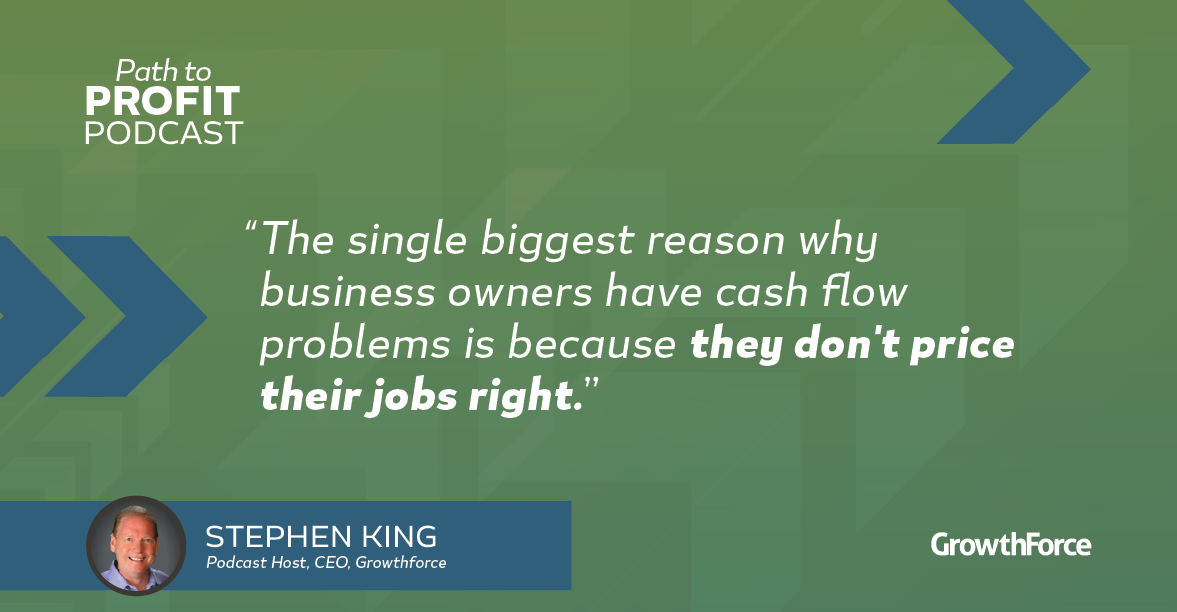8 min read

Setting sales goals is a normal, necessary part of running a business that you hope to run for a long, long time. Keeping track of your progress toward annual sales goals helps you determine whether your business is on target to meet, exceed, or fall short of those goals.
|
Key Takeaways
|
While meeting or exceeding your sales goals both offer a clearer path forward, falling behind and missing the target presents challenges that should raise questions and prompt you to take a close look at your business operations and strategy.
But First, Remember You Can't Just Sell Your Way to Profit
How well you pay attention to your business’s financial management, is the first and foremost key to being on top of your profitability.
Perhaps you're facing repeated cash flow shortages or coming up in the red month after month. These could be symptoms of missed sales targets, but these kinds of financial issues can also indicate operational problems within your business, such as exorbitant costs, faulty pricing, or imperfect strategy.
The first thing you need to do when you fall behind on profitability is look at the overall financial health of your company. In addition to being short on sales, are you struggling with cash flow, suffering shrinking profit margins with out-of-scope work (time leakage), or facing other financial difficulties that could threaten the strength and wellbeing of your company?
If your profit margins are meager and your costs are increasing, then skimpy sales probably aren't your only concern. You need to take a fine-toothed comb to your business's operation and strategy to identify and cut unnecessary costs, eliminate clients or job types that don't produce strong profit margins, and take a second look at your pricing strategy to ensure you're getting as much out of each individual sale as you should be.
Now, let’s get back to talking sales - It’s not just how much you sell, it’s how WELL you sell.
3 Things You Must Do When Your Sales Are Struggling
You can’t just sell your way to profit, but you should be monitoring the success of your sales goals, and refining your sales approach. Take action to strengthen the financial health of your business by doing these 3 things...
1. Revise Your Sales Strategy for Better Direction
If you've been in business for a while, you probably assume you know your customers like the back of your hand – but let's be honest, when was the last time you really took a long look at the back of your hand? Chances are it's been a while, and your hand has probably earned itself a few more freckles.
When was the last time you really studied the market, asked your clients what they want, looked at what your competitors are offering, or reconsidered your service strategy?
If sales are slow, don't immediately reach for your fail-proof, go-to marketing strategy. Instead, take a beat to do some research and gain insights into your potential customers, existing clients, competitors, and take a close look at what your own business has been up to.
Read More: Revealing The Trends Of Your Business Profitability
Use your business's financial data to pull profit and loss statements by class so that you can identify the types of clients, services, or jobs that are most and least profitable. Focus your marketing and sales strategies on the most profitable types and consider nixing the rest.
Next, sit down with the leaders in your company to devise a new strategy designed to differentiate your business from the competition and appeal to a specific target market by providing services that meet their needs and soothe their pain points.
2. Motivate Your Sales Team With Common Goals
Increase your sales from within by finding creative ways to motivate your sales team. This includes providing recognition and rewards for their successes.
Recognizing and rewarding top performance is a way for businesses to extract that extra effort.
Monetary rewards, such as sales commissions, are highly effective when it comes to motivation. Rewards are given to express appreciation, recognize the value of employees, provide encouragement, compensate employees for taking and/or sharing risks- and (most importantly) make work fun.
However- recognition alone is a powerful, profit-driving tool. Companies that have an employee recognition program have a 63% increase in productivity just by recognizing their high performers, according to the Society of Human Resource Management. That translates into a 58% increase in profits.[1] This is an essential component to maintaining high employee morale and positive workplace culture, while also helping to inspire employees who wish to do better.
Read More: How To Build A (High Performing!) Remote Workplace Culture
This starts with developing an operating framework that ties your human capital management strategy and financial management strategy together by rallying and orienting your entire organization – including the sales team – around common goals. This gives each of your employees ownership and some small bit of control over the business's overall, long-term success.
3. Protect Your Profit Margins and Hit Your Sales Targets
The most widely used method of motivating a sales team is sales commission because it works. Rewarding your sales team for each sale they make seems simple enough, and it is. However, there are a variety of ways you can pay commission, and one method is good for both your business and the members of your salesforce – the gross margin commission model.
The most basic commission model, called the net revenue model, pays a percentage of revenue. So, if you're offering 10% commission, the employee makes $100 on a $1000 sale – regardless of what your business makes on the sale. So, if your profit margin is slim, this could result in your business taking a loss or, at the very least, venturing out onto dangerously thin profit margin ice.
Now, the gross margin commission model pays a percentage of the gross profit margin earned on a sale. To determine an employee's commission, you must first calculate the gross profit margin on the sale:
- Gross Profit Margin = (Revenue - Cost of Goods Sold) / Revenue
Then, you can pay a percentage, perhaps 10%, on the gross profit. If the $1,000 sale requires a $700 spend indirect costs, then your gross profit margin equals 30% with $300 in gross profits. As a result, an employee receiving a 10% commission using the gross profit commission model would earn $30.
Read More: Want To Increase Your Profit Margins? Use This Sales Commission Model.
Although it requires a couple of extra steps in accounting, this commission model is ideal because it shields your profit margins, protects you from losses, and also simplifies the process of offering discounts.
Consider These Four Types of Pricing Strategies to Help Your Profitability:
1. Market Penetration Pricing
Market penetration pricing is a strategy intended to help a business penetrate a new market. Whether you're just opening for business and want to make a splash or are hoping to attract the attention of potential new customers, penetration pricing can help you do it.
The principle is fairly simple. Look at what your competition is charging and charge less. This type of low pricing is likely not sustainable, so it's good to look at what your margins will be and whether you'll be taking any losses as a result of the penetration prices you set to determine how long you can afford to offer the attractive deal.
Rather than offering all-around lower prices to attract new clients, you can also offer free trials or a discount on first-time services. This model helps you generate new leads but shields your profit margins from a blanket discount.
When using a penetration pricing strategy, be careful not to price services so low that they appear less valuable or attractive to your customers. Discounts don't always make products or services more appealing. So, be strategic in the way you present low prices with smart marketing.
2. Cost Plus Pricing
Cost-plus pricing is most commonly used in products businesses, and it's based on a simple markup. Figure out how much it costs you to manufacture your product and then add a percentage on top of that. Be sure it's enough to cover your overhead, indirect expenses as well as direct costs while leaving room for profits and free cash flow.

[PODCAST] Cash flow is the lifeblood of every business. In this episode of Path To Profit, Stephen King, President & CEO at GrowthForce, walks you through why and how to price your jobs to raise your cash flow.
3. Target Profit Margin Pricing
Target profit margin pricing is similar to cost-plus pricing but it looks to generate a target profit margin – rather than a simple markup. As a result, the upside has no limits (except what your customers are willing to pay) and your pricing strategy will always shield your business's financial health.
Read More: The Importance of Pricing For The Profitability Of Your Business
4. Value Pricing
Rather than considering your costs alone, value pricing also considers the perceived value of your business's products or services. Value pricing enables business owners to set their prices based on the true value – not just the costs – of their services.
Read More: Value Pricing – Charge What You're Really Worth
If you offer premium products, white-glove services, or services that require specialized expertise, then your value pricing is likely the best pricing strategy for your business. You'll be able to build in healthy profit margins and you won't need to be afraid of selling yourself short.
Use Your Back Office to Power Your Way to Profitability
From shielding your profit margins while identifying the most profitable types of clients and services in your business to optimizing prices and motivating your sales team – Does your back office have the power to do it all?
If your sales are lagging and you're still relying on primarily manual bookkeeping and accounting processes, then the first thing you need to do is to streamline, automate, and update. A robust back office will provide you with the financial data you need for pulling management reports that can give you invaluable insights into your business's operation, strategy, and each of the decisions you make.
With a powerful back office, you can make data-driven decisions to improve your sales while also strengthening the financial health and future of your company.




